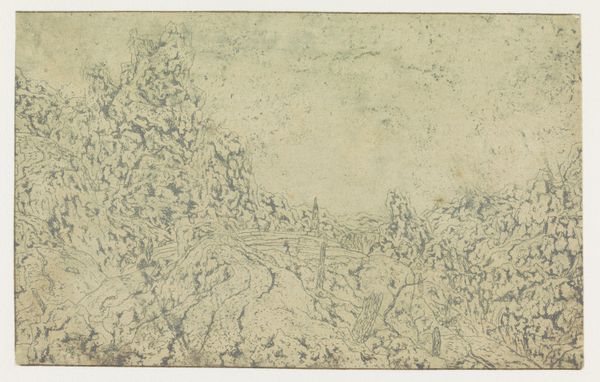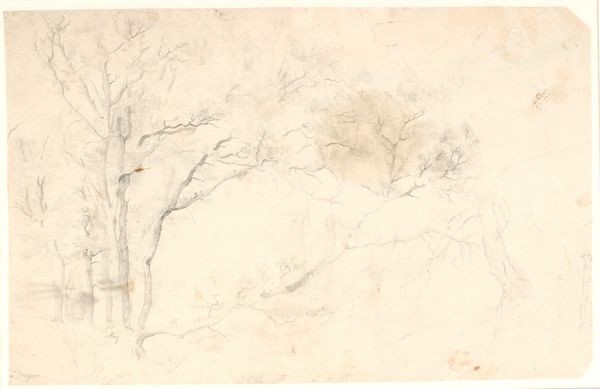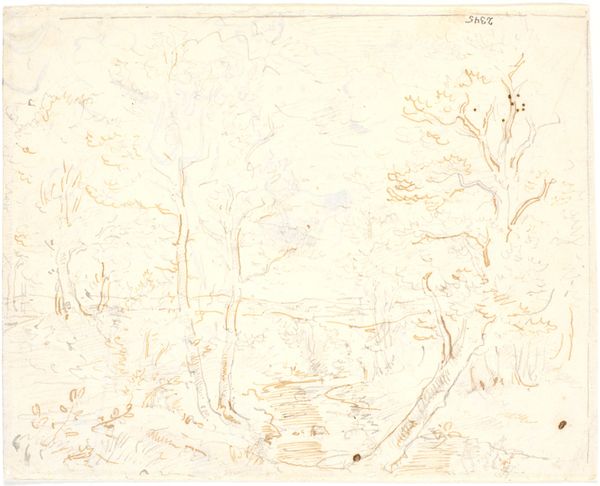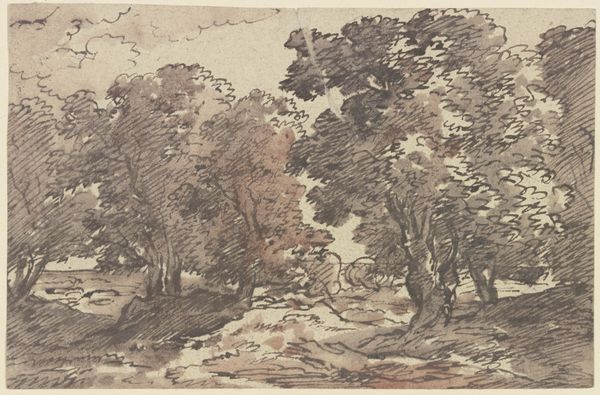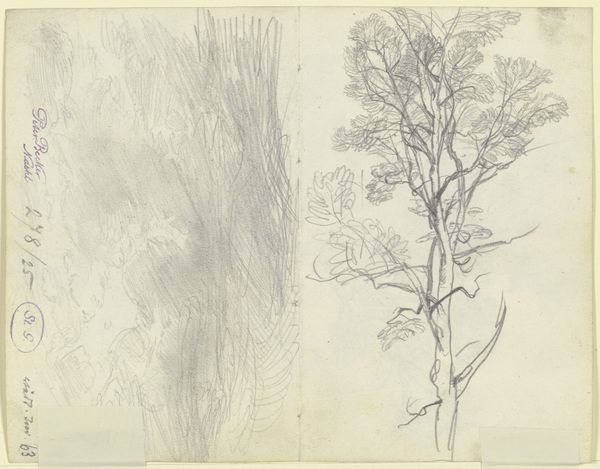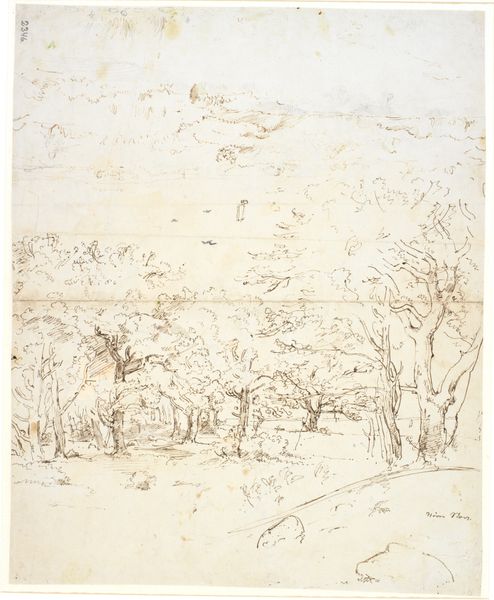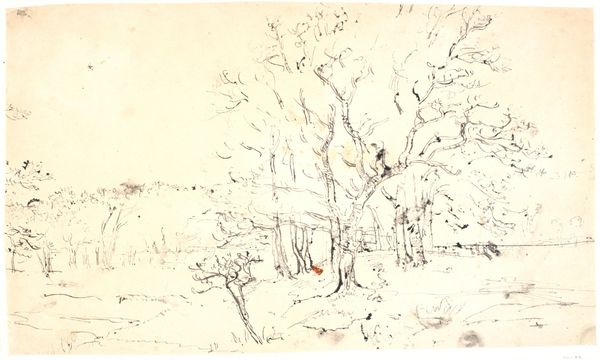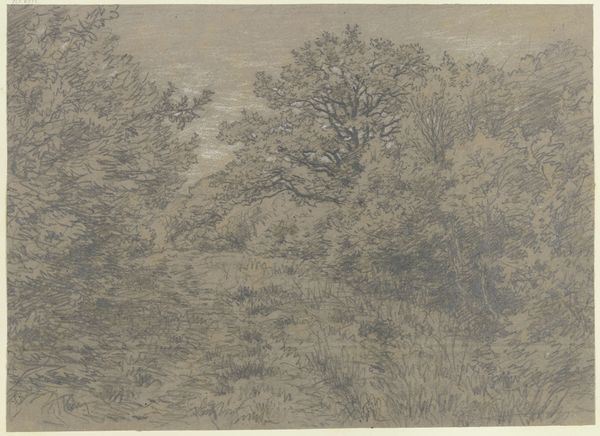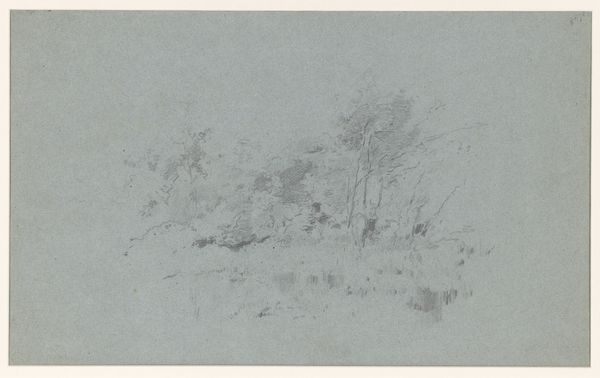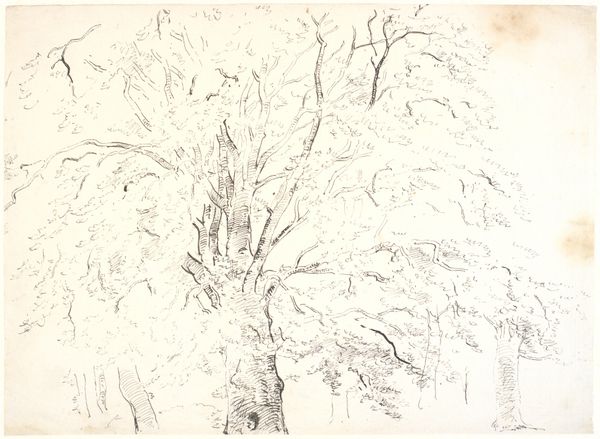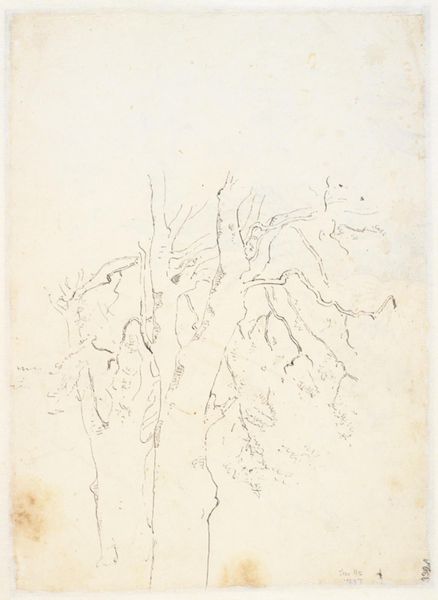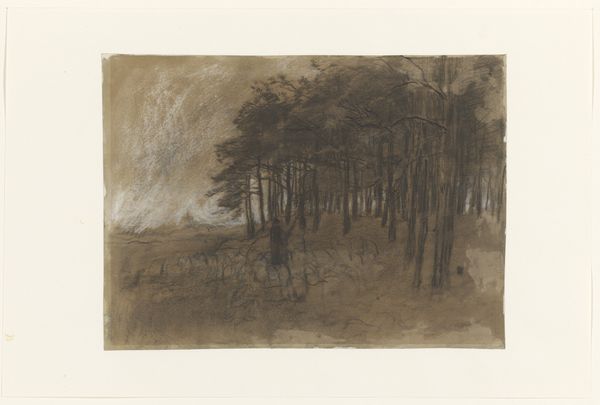
drawing, ink, pencil, graphite
#
drawing
#
french
#
landscape
#
ink
#
romanticism
#
pencil
#
graphite
#
watercolor
Copyright: Public Domain
Here is Camille Corot’s Study of a Landscape near Cività Castellana, made with graphite and brown wash on paper. This drawing offers a view into Corot’s process. The composition feels like a snapshot, quickly capturing the essence of the Italian countryside. What stands out is the formal interplay between the dense, textured foliage and the open, undefined space of the sky. Corot is known for his ability to balance detail with an overall sense of harmony. Notice the trees; they’re not rendered with botanical accuracy, but rather as masses of light and shadow. This approach aligns with the move towards impressionism, where capturing the feeling of a scene becomes more important than its literal representation. The way Corot uses light—almost as a structural element—creates depth and atmosphere. This emphasis on the formal qualities of light, texture, and space, moves beyond mere representation, engaging us with the sensory experience of the landscape itself.
Comments
stadelmuseum about 2 years ago
⋮
Camille Corot drew this view of an overgrown rock formation near Civita Castellana on the occasion of his first stay in Italy. During his time in Rome, between 1825 and 1828, the artist showed little interest in the great art of the museums and churches, but focused his attention almost exclusively on the landscape. He was drawn out into the countryside around Rome, the Roman Campagna: to the south, to the Alban Hills, Lake Nemi and Arricia; to the east to Subiaco and Olevano; and especially to the north, to the unspoilt region of the Sabine mountains and again, in the spring of 1826 and the autumn of 1827, to the rocky plateau of the small medieval town of Civita Castellana.During these excursions to the various regions, mostly in the company of like-minded friends such as François-Edouard Bertin and the German Ernst Fries, Corot's aim was not to capture a picturesque location with topographical accuracy simply to be able to transfer it to a painting. Instead, Corot the painter made the countryside of Italy his own through numerous studies executed with an analytical eye and sensuous perception.In this 'Landscape Study near Civita Castellana', created in pencil and pen and ink, Corot has shaped his view of the selected natural detail thoughtfully but also with an experimental approach. His attention is focused on the forms and values of the unique symbiosis of a rugged rocky massif with luxuriant vegetation. While drawing the sweet chestnut trees, his keen sense enables him to characterise the dense, wild growth, which resembles an organic structure. By concentrating on the typical structure and the volume of the trees, the artist depicts its natural unity as a lively rhythmical and spatial formation. He uses curving lines to describe the arching forms of the treetops against the light, and hatching of different densities to indicate the shadowy depths of the gaps in between.As a motif study, this drawing stands in evident contrast to the panorama with Mount Vesuvius which the artist sketched on the back of the sheet in Naples in the spring of 1828. In its vivid and yet subjective quality, it makes clear why the early Corot's "modern" approach to landscape had such a profound effect on artists of the following generation, especially Paul Cézanne.
Join the conversation
Join millions of artists and users on Artera today and experience the ultimate creative platform.
